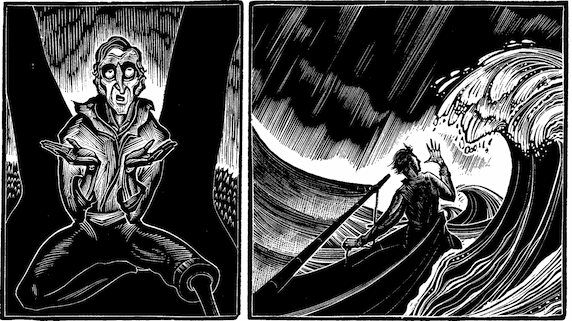Elements:
- uses text & illustrations in a comic-strip format to tell a story
- uses graphical elements such as panels, frames. speech/thought bubbles, etc in a sequential way to create & evoke a story in a reader’s mind
- doesn’t rely on just text to construct a narrative
- longer & more complex than a comic
- considered to be an important bridge for greater reading development
Key terms:
- panel – individual frame or single drawing
- gutter – space between framed panels
- bleed – an image than extends to and/or beyond the edge of the page
History:
- ‘graphic novel’ traces back to an essay written by Richard Kyle in the comic book fanzine Capa – Alpha
- The term became mainstream with the publication of Will Eisner’s A Contract with God in 1978
- Lynd Ward printed wordless novels using woodcuts in 1930s

Classic graphic novels:
- Maus by Art Spiegelman
- Persepolis by Majarie Satrapi
- Watchmen by Alan Moore & Dave Gibbons
- The Diary of a Teenage Girl by Phoebe Gloeckner
- Batman: The Dark Knight Returns by Frank Miller
- The Sculptor by Scott McCloud
Information from:
- https://prezi.com/hwzollmg9id-/analyzing-elements-of-graphic-novels/
- https://teacher-for-inclusion.com/2021/01/17/5-characteristics-of-graphic-novels/
- https://www.masterclass.com/articles/how-to-create-a-graphic-novel
- https://www.famousauthors.org/best-graphic-novels
- https://www.npr.org/2017/07/12/533862948/lets-get-graphic-100-favorite-comics-and-graphic-novels